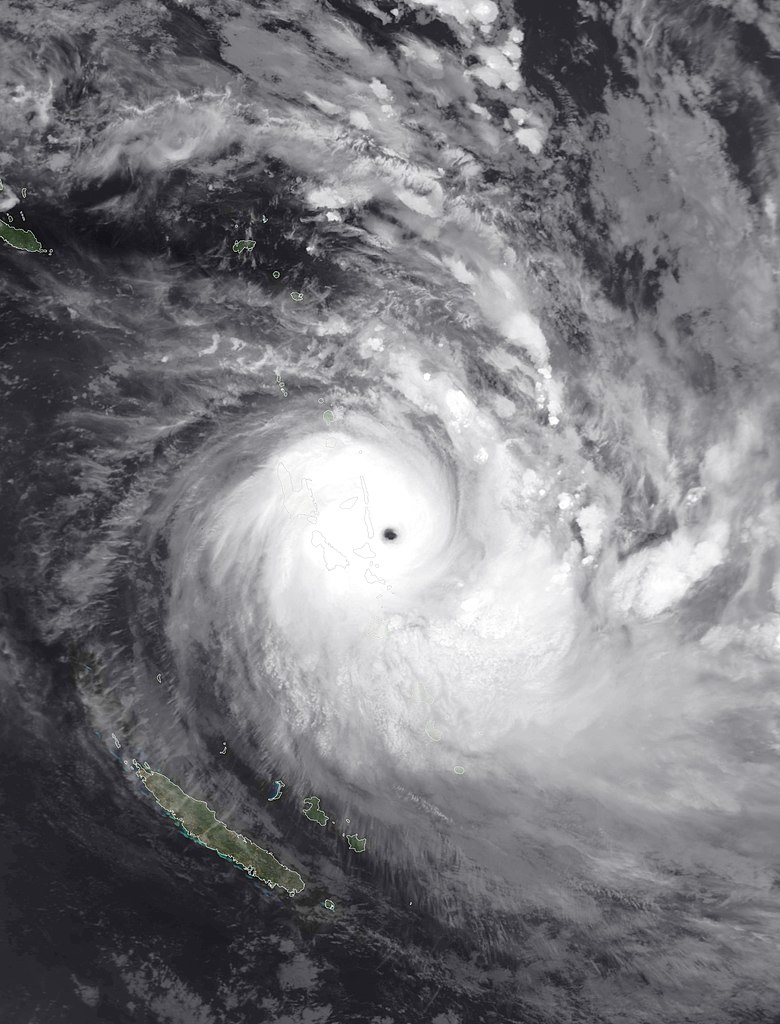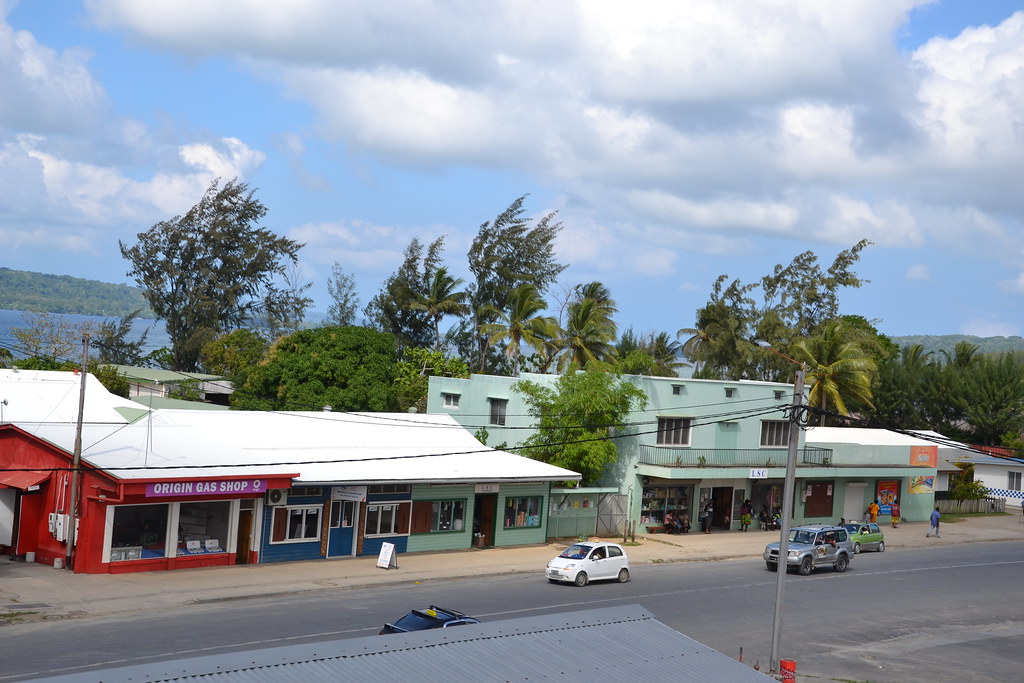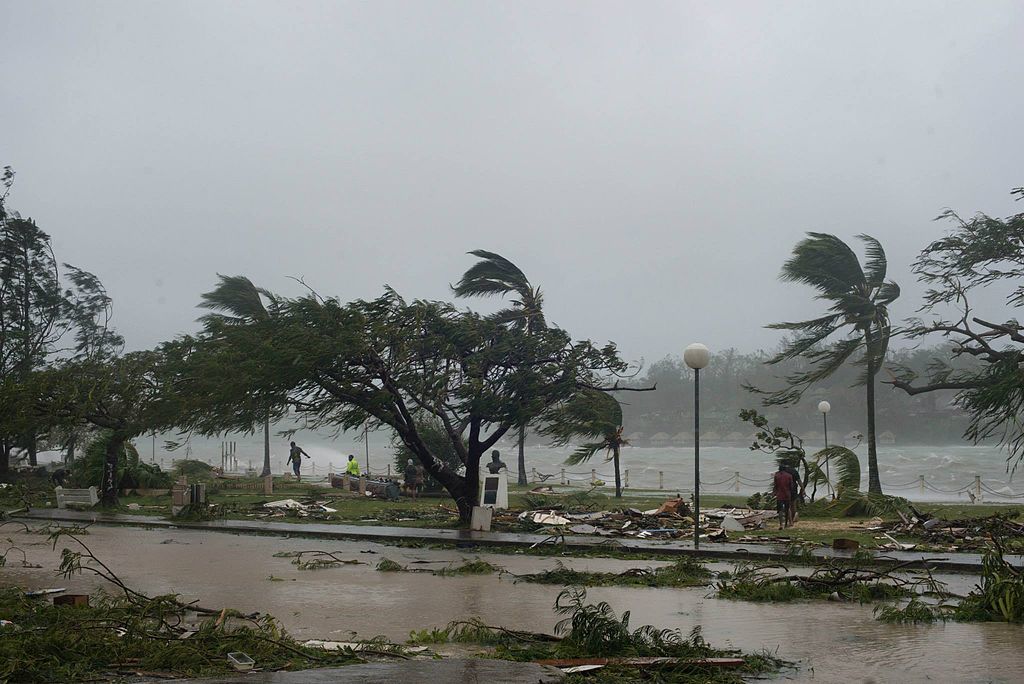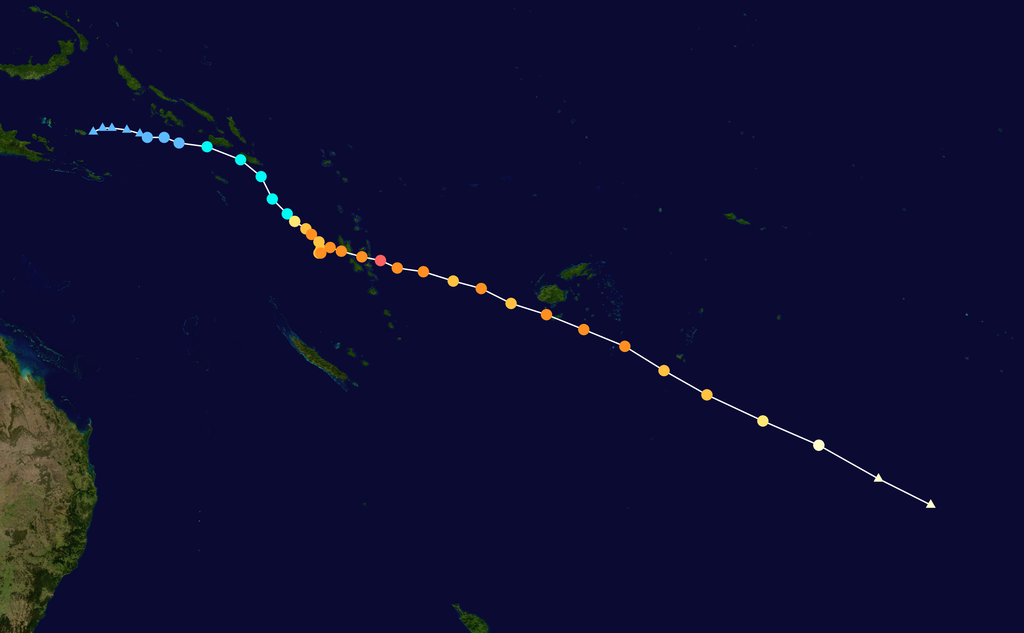Luganville, Vanuatu —
Cyclone Harold tore through the tiny Pacific island nation of Vanuatu this week, causing massive destruction. The Category 5 cyclone – the strongest kind – also hit the Solomon Islands, Fiji, and Tonga.
Cyclones, also known as hurricanes or typhoons, are strong storms with fast, spinning winds. The storms form over oceans, where the spinning winds collect water as the cyclone moves. The water is released as rain as the cyclone hits land. Cyclones can be hundreds of miles or kilometers across.
Cyclone Harold began near the Solomon Islands last week, where it washed passengers off a boat, killing at least 27 people.

(Source: NASA [Public domain], via Wikimedia Commons.)
On Monday and Tuesday of this week, Cyclone Harold pounded through Vanuatu – a nation of about 300,000 people spread out over the country’s 83 islands. The storm hit especially hard in northern Vanuatu, where it cut off communications, making it difficult to figure out how much damage had been done.
No deaths have been reported yet in Vanuatu, but photos taken from planes show that huge areas of the islands have been damaged. Winds from the cyclone reached speeds of up to 145 miles per hour (235 kilometers per hour). The cyclone ripped through forests, smashing up trees and leaving the areas looking bare.
Espritu Santo, Vanuatu’s largest island, was directly in Harold’s path. In Santo’s Luganville, Vanuatu’s second largest city, the situation was terrible. Schools and other buildings were destroyed. Many people lost their homes. The electricity was out, which meant the city also lost running water.

(Source: Simon_sees, via Flickr.com.)
Many homes near the Sarakata river were crushed or flooded as the river rose up to 26 feet (8 meters) above the normal level. People in the area may soon be short of food, since the cyclone destroyed many of the gardens that the people depend upon.
“This is one of the worst experiences of my life,” said Luganville’s Lord Mayor, Patty Peter. “It’s a nightmare for all the people in the northern islands.”
The damage from Cyclone Harold reminds many people of 2015’s Cyclone Pam. That storm damaged 90% of the buildings in the country’s capital, Port Villa. It’s taken Vanuatu years to recover from Cyclone Pam.

(Source: Graham Crumb/Imagicity.com [CC BY-SA], via Wikimedia Commons.)
The coronavirus pandemic has made the situation even more difficult. Vanuatu is one of the few countries in the world that doesn’t yet have any cases of COVID-19. To keep the islands free of the virus, Vanuatu shut its borders to international travelers. That will make it more difficult for the island nation to get the help it needs.
New Zealand and Australia have both offered money and other support to help Vanuatu deal with the effects of Cyclone Harold.

(Source: Meow [Public domain], via Wikimedia Commons.)
Though Vanuatu was hit the hardest, both Fiji and Tonga also had serious flooding, and many buildings were destroyed. Thousands of people in Fiji are staying in centers set up for people affected by the cyclone.
Fiji’s coronavirus situation is more challenging. The country already has 15 cases of COVID-19. It will be difficult for workers to help people affected by the cyclone while making sure the coronavirus doesn’t spread further.
